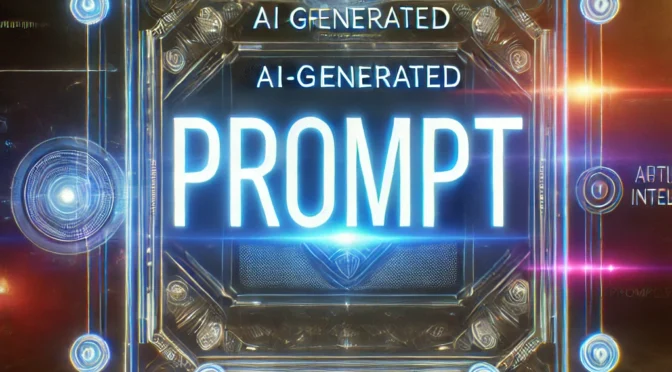In today’s data-driven enterprise landscape, unlocking actionable insights from your core systems is a competitive advantage. One of the most valuable — and often underutilized — sources of information is the SAP Material Master. Whether you’re in supply chain, procurement, manufacturing, finance, or sales, the data held within the Material Master can help improve decision-making, reduce costs, and enhance operational efficiency.
In this article, we’ll explain what SAP Material Master is, how it is structured, and how to use it to uncover valuable business insights that drive smarter operations.
What is SAP Material Master?
The SAP Material Master is the central repository of data related to all the materials (products, components, packaging, etc.) a company uses. It holds structured information across various functional views — such as basic data, purchasing, sales, MRP (Material Requirements Planning), and accounting — and is accessed using transactions like MM01, MM02, and MM03.
Each department in an organization uses a specific “view” of the material master, which ensures users see only the data relevant to their function. This modular design improves data quality, security, and efficiency.
Why Each Function Has a Limited View
- Role-Based Access and Security: Only data relevant to a department is visible to minimize errors and protect sensitive data.
- Process Relevance: Views are function-specific (e.g., sales view supports pricing and order processing).
- Organizational Structure: Views correspond to areas like Plant, Storage Location, or Sales Org.
- Usability and Performance: Limiting views reduces clutter and increases speed.
- Data Quality Control: Restricts non-experts from editing critical fields.
Understanding “View” in Material Master
A view in SAP Material Master represents a group of related data fields tailored for a specific business function. For example:
- Basic Data View: General info like material type and base unit.
- Purchasing View: Vendor-related fields.
- Sales View: Sales organization-specific data.
- MRP View: Planning and procurement control fields.
Each view maps to one or more database tables and is accessed via T-codes such as MM01 (Create), MM02 (Change), and MM03 (Display).
Diagram Reference: A visual diagram is available showing how transaction codes access different material master views, which then map to specific tables and fields.
Which View Does the Data Management Team Use?
While there’s no specific “data management view,” such teams typically manage multiple foundational views to ensure consistency across the enterprise:
- Basic Data View (most common for central data governance)
- Classification View (used to categorize and enrich material data)
- Plant-specific Views like MRP and Storage if responsible for data at that level
They ensure overall data quality, validate completeness, and enforce data standards.
SAP Material Master Data Dictionary (Key Tables)
| Table | Description | Key Fields |
|---|---|---|
| MARA | General Material Data | MATNR, MATKL, MEINS, MTART |
| MAKT | Material Descriptions | MATNR, SPRAS, MAKTX |
| MARC | Plant-specific Data | MATNR, WERKS, DISPO |
| MARD | Storage Location Data | MATNR, WERKS, LGORT |
| MBEW | Valuation Data | MATNR, BWKEY, STPRS, VPRSV |
| MVKE | Sales Data | MATNR, VKORG, VTWEG, PRODH |
| MLAN | Tax Classification | MATNR, ALAND, TAXKM |
| MARM | Units of Measure | MATNR, MEINH, UMREZ, UMREN |
| MLGN | WM Data | MATNR, LGNUM |
| MGVM | View Assignment | Tracks which views exist for a material |
These tables contain fields that define and describe every aspect of a material and are accessed and maintained through transaction codes.
Relationship Between Table, Fields, Mapping, Attributes, and T-Codes
| Component | Description |
| Table | Database object storing material data (e.g., MARA, MARD). |
| Field | Column within a table representing a data element (e.g., MATNR). |
| Mapping | Alignment of fields between systems or modules. Useful for integration or migration. |
| Attribute | Characteristic or metadata about a field (type, length, validation). |
| T-Code | SAP shortcut to execute functions (e.g., MM01, MM03). |
How They Work Together:
T-code (e.g., MM01)
|
|--> accesses Views (UI Screens)
|
|--> maps to Tables (MARA, MARC, etc.)
|
|--> contain Fields (MATNR, MEINS, etc.)
|
|--> each field has Attributes (length, type, editable, etc.)7 Ways to Extract Business Insights from SAP Material Master
1. 🧱 Inventory Optimization
- Identify slow-moving, excess, or obsolete stock
- Improve safety stock and reorder points
✅ Insight: Reduce carrying costs and improve stock turnover.
2. 💸 Procurement Performance
- Analyze price trends, vendor lead times
- Optimize supplier selection based on material group and frequency
✅ Insight: Renegotiate contracts or consolidate suppliers.
3. 📊 Financial Valuation
- Track price control and standard vs. moving average cost
- Link to product margins and cost centers
✅ Insight: Maintain accurate product costing and pricing.
4. 📈 Sales Analysis
- Use sales data (MVKE + sales orders) to track product performance
- Identify top SKUs, seasonal trends
✅ Insight: Align production and inventory with demand.
5. 🏠 Manufacturing Efficiency
- Optimize planning strategies, batch sizes, and production lead times
✅ Insight: Streamline scheduling and reduce waste.
6. 🛡️ Compliance & Risk
- Track hazardous materials, shelf-life, and batch-managed products
✅ Insight: Ensure safety and traceability.
7. 🧹 Data Quality Monitoring
- Detect missing, duplicate, or invalid records
- Implement controls for material creation and update
✅ Insight: Improve master data governance and reduce downstream errors.
Tools to Enable These Insights
- SAP Fiori Apps (e.g., Monitor Material Master Completeness)
- SAP Analytics Cloud (SAC)
- SAP BW / BW/4HANA
- Power BI / Tableau (via SAP connectors)
- Custom ABAP Reports / CDS Views
Final Thoughts
The SAP Material Master is more than just a data structure — it’s a business enabler. By fully utilizing the data it contains, organizations can streamline operations, reduce costs, and enhance data-driven decision-making across all departments.


